1. Early Life and Education
Adrian Newey's early life was marked by a keen interest in automobiles and a challenging academic journey that eventually led him to a distinguished career in engineering.
1.1. Childhood and Education
Adrian Martin Newey was born on 26 December 1958, in Colchester, Essex, England, to Richard and Edwina Newey. His father was a veterinarian with a passion for cars, even building a Lotus Elan kit car, which influenced Adrian's early fascination with automotive details. His mother served as an ambulance driver during the Second World War. Newey developed an early interest in cars, reading "Autosport" magazine and aspiring to be a racing car designer by age 12. At 14, he acquired a used racing kart and personally rebuilt its engine and welded its frame, demonstrating a hands-on approach to engineering from a young age.
He attended Repton School, a public school, alongside motoring journalist Jeremy Clarkson. However, Newey was asked to leave Repton at the age of 16 after an incident during a Greenslade concert held at the school's 19th-century Pears School Building. He reportedly amplified the band's mixer sound levels, causing the building's stained glass windows to crack. Newey later admitted that leaving school early was a mistake that initially hindered his academic career.
He subsequently enrolled in a polytechnic, earning a diploma in engineering in 1977. In 1980, Newey graduated with a first-class honours degree in Aeronautical Engineering from the University of Southampton. He chose aeronautical engineering due to the presence of a wind tunnel facility, a tool also utilized by Formula One teams, which was crucial for his ambition to work in motorsports. His undergraduate thesis, "The Application of Ground Effect Aerodynamics to Sports Cars," reflected his early focus on ground effect principles, which were revolutionizing racing car aerodynamics at the time.
2. Career
Adrian Newey's career in motorsport spans several decades, marked by his innovative designs and significant contributions to numerous championship-winning teams in both American open-wheel racing and Formula One.
2.1. Early Motorsport Career
Newey began his professional career in motorsport immediately after graduating from university, quickly making a name for himself in various racing disciplines before settling into Formula One.
2.1.1. IMSA and CART Career
After graduating in 1980, Newey joined the Fittipaldi Formula One team, working under renowned designer Harvey Postlethwaite as chief of aerodynamics for the new F8 chassis. However, the team's financial difficulties led to its eventual collapse, and Newey left.
In 1981, he moved to March Engineering. While serving as a race engineer for Johnny Cecotto in European Formula Two, Newey began designing racing cars. His first major project, the March GTP sports car, proved highly successful, winning the IMSA GTP title for two consecutive years in 1983 and 1984.
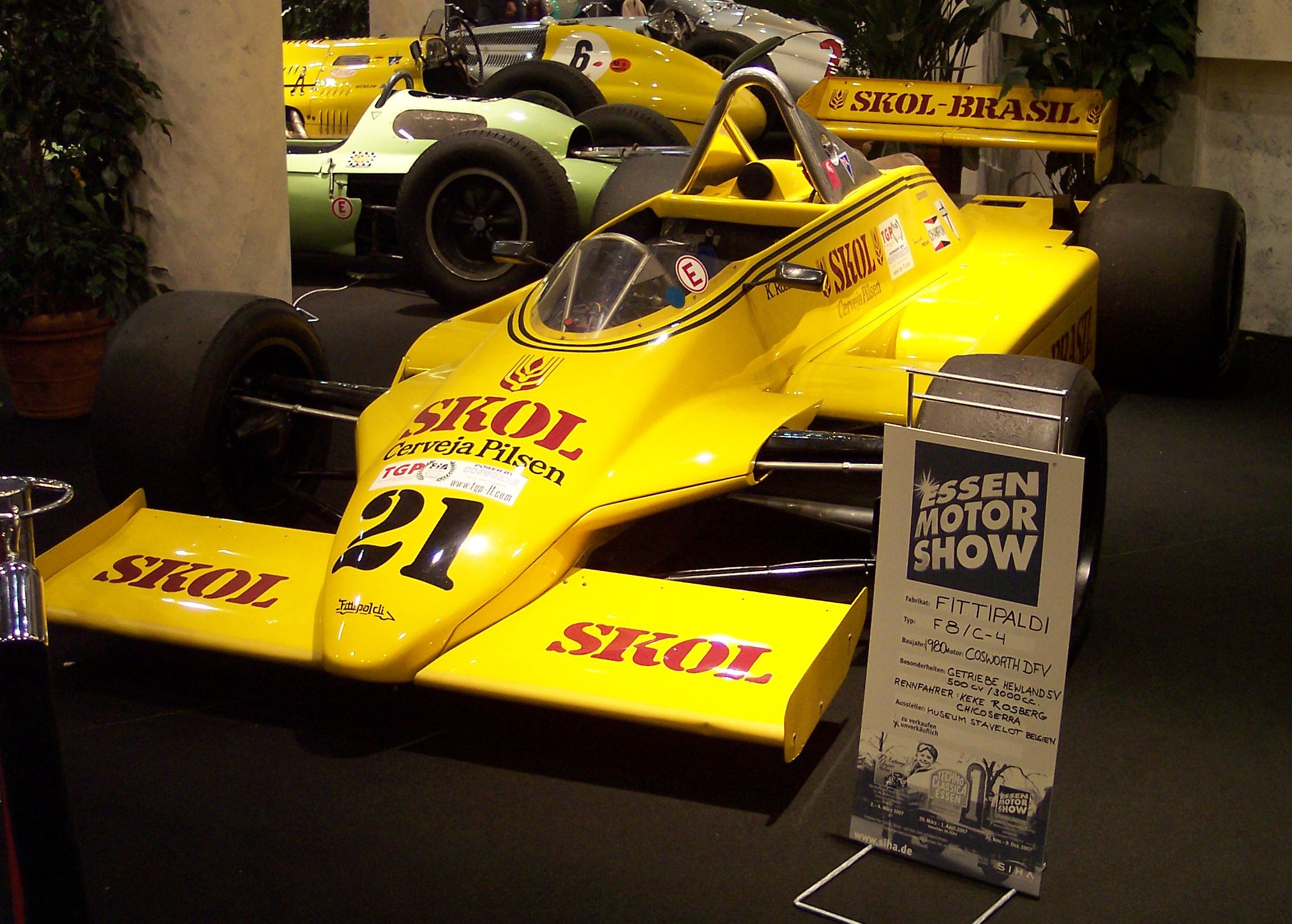
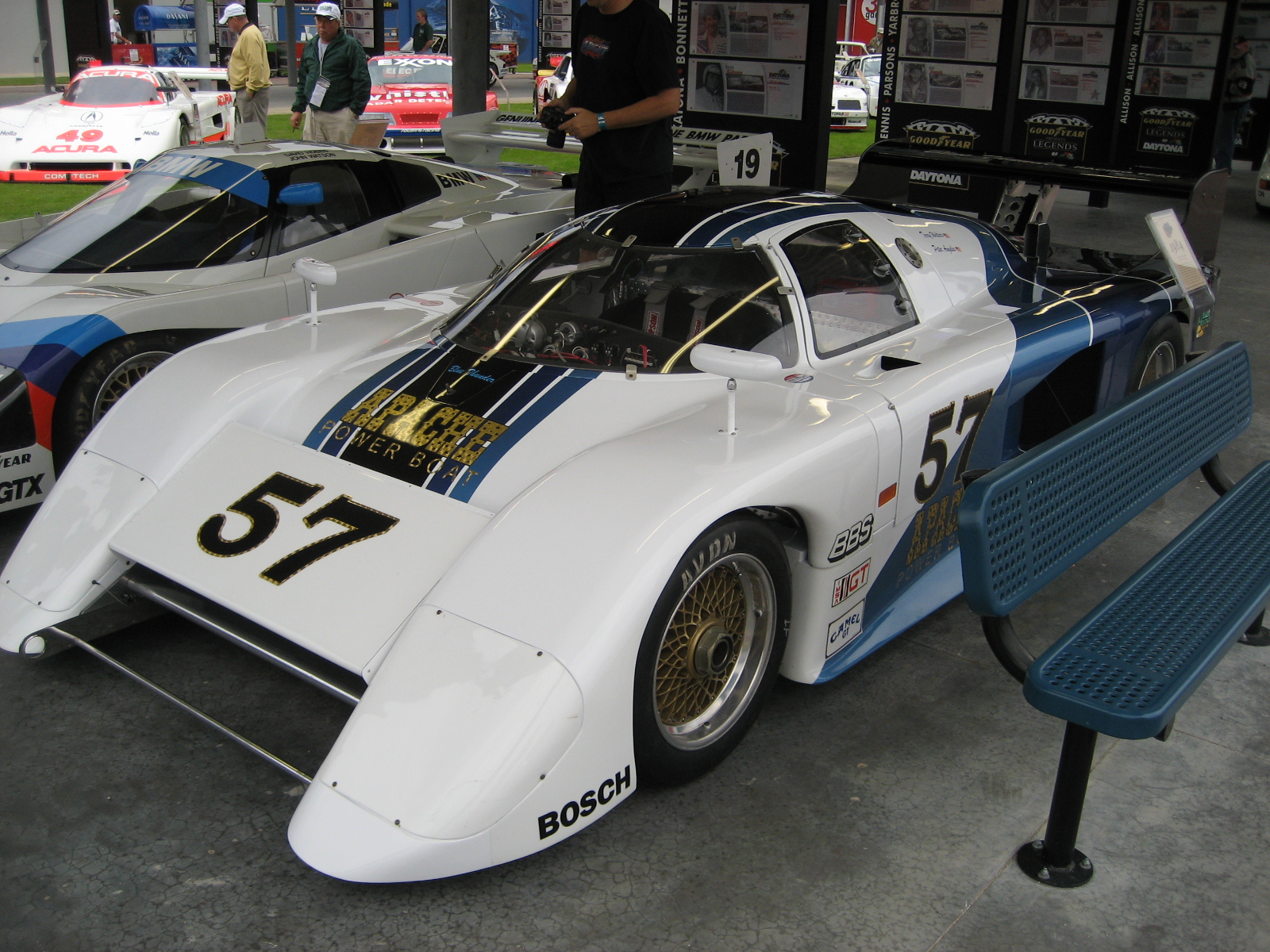
In 1984, Newey transitioned to March's Indy car project, designing the March 84C. He also worked as a designer and race engineer for Bobby Rahal at Truesports, quickly forming a close bond with Rahal and the team. Newey's March 85C design went on to win the 1985 CART championship with Al Unser and the 1985 Indianapolis 500 with Danny Sullivan. In 1986, Newey moved to Kraco to engineer Michael Andretti's car.
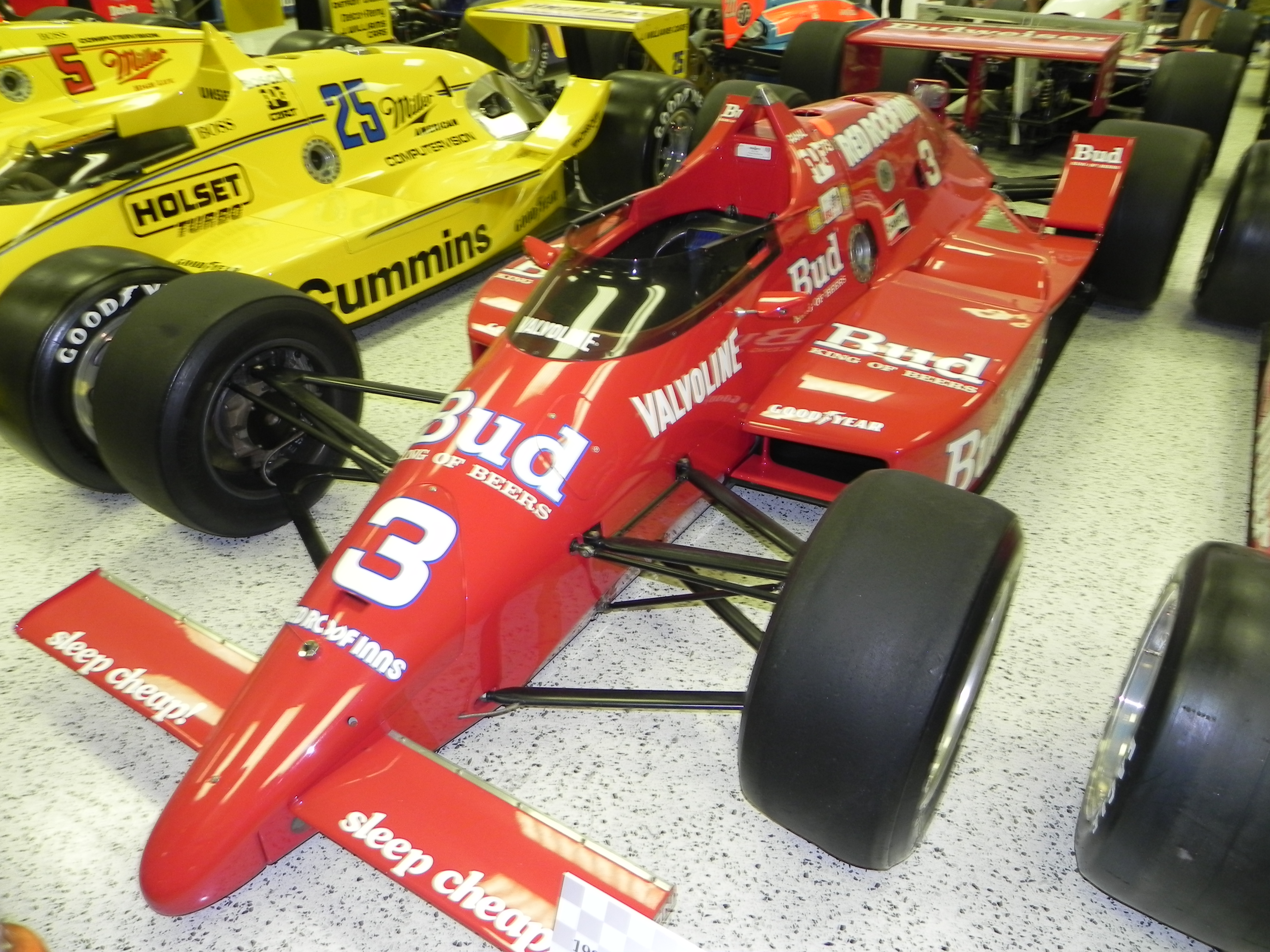
Despite his departure from Truesports, his March 86C design continued its success, winning the CART title and the 1986 Indianapolis 500 with Bobby Rahal. Although his designs secured four consecutive Indy 500 victories and two consecutive CART titles, Newey himself did not serve as race engineer for these championship-winning efforts.
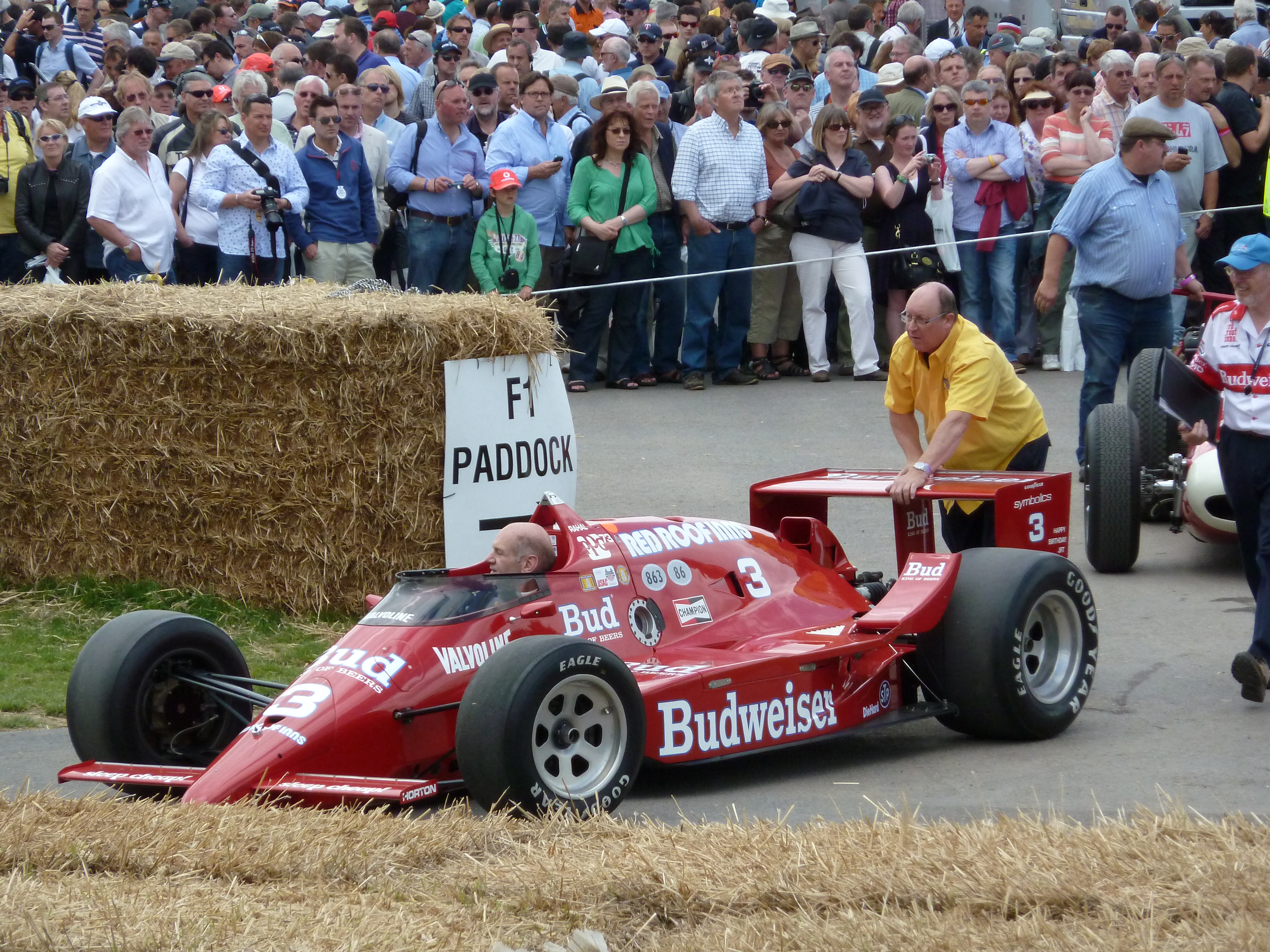
At the end of 1986, Newey briefly joined the Haas Lola F1 team, hoping to improve its performance, but the team withdrew from Formula One after the 1986 season. Following a stint at Newman-Haas in 1987 as Mario Andretti's race engineer, Newey was rehired by March, this time to work in Formula One as chief designer. During this period, he also began working on the Leyton House-sponsored March F1 car for the following year.
2.2. Formula One Career
Adrian Newey's Formula One career is distinguished by his roles as a leading designer and technical director across multiple teams, consistently producing championship-contending cars.
2.2.1. March/Leyton House (1988-1990)
Newey's return to Formula One saw him as chief designer for March. His first F1 design, the 1988 March 881, which was also used for the opening two Grands Prix of the 1989 season, proved unexpectedly competitive. Despite being powered by a naturally aspirated engine, it demonstrated impressive speed, particularly in cornering, due to its superior aerodynamic design. At the 1988 Portuguese Grand Prix, Ivan Capelli finished second, and at the 1988 Japanese Grand Prix, Capelli even briefly took the lead from Alain Prost's dominant McLaren-Honda turbo on lap 16. Newey, alongside Rory Byrne of Benetton, became recognized as a prominent "aerodynamic designer."
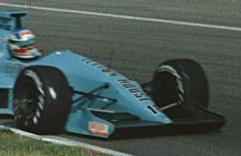
In 1989, as March rebranded to Leyton House Racing, Newey was promoted to technical director. The team, backed by Japanese millionaire Akira Akagi, invested in its own wind tunnel, allowing Newey to pursue more radical aerodynamic designs. However, the resulting CG891 proved difficult to handle due to rapid changes in downforce with variations in car attitude. In 1990, Leyton House collaborated with Ilmor to develop an F1 engine for the following year, a relationship that would prove beneficial for Newey later. Despite this, the team's performance continued to decline, leading to Newey's dismissal just before the 1990 French Grand Prix. Ironically, Capelli achieved a remarkable second-place finish at that very race shortly after Newey's departure. Newey later reflected on his firing, stating that he had already decided to leave because "once a team gets run by an accountant, it's time to move." He added that his self-confidence suffered but Williams had already approached him.
2.2.2. Williams (1991-1996)
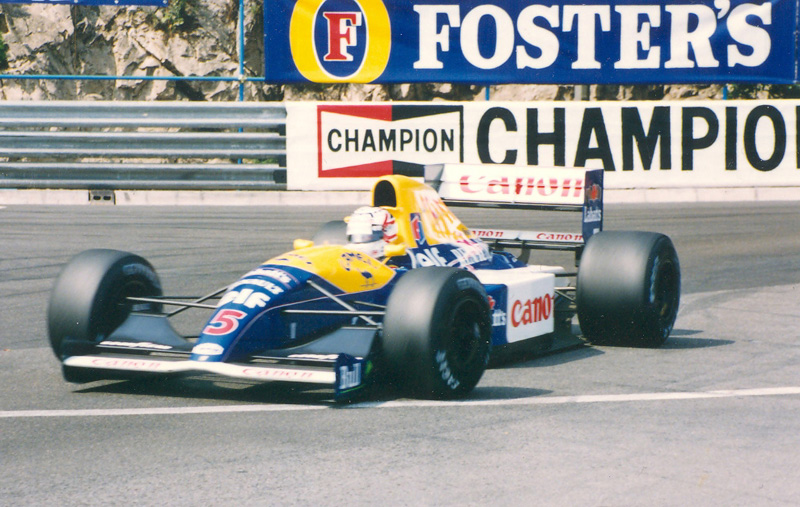
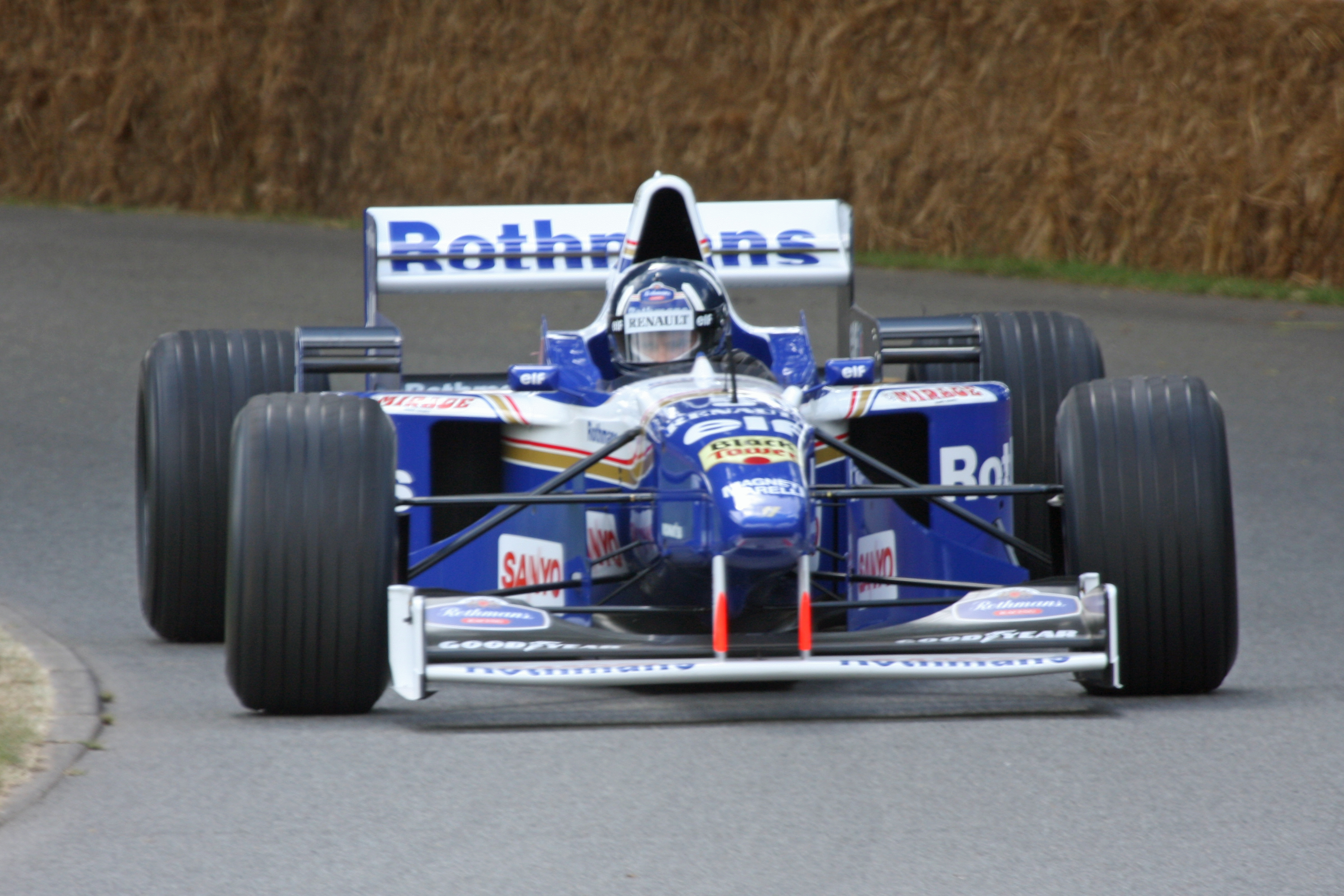
In July 1990, Newey joined Williams F1 as chief designer, forming a highly successful partnership with technical director Patrick Head. Head focused on the drivetrain and suspension, while Newey concentrated on chassis and aerodynamics. This collaborative approach, combined with Williams' superior budget, drivers, and resources, quickly made them the dominant design force of the early 1990s.
In 1991, Newey's FW14 chassis, featuring a new semi-automatic transmission, initially suffered from reliability issues. However, as the season progressed, its performance and reliability improved significantly, allowing Nigel Mansell to challenge Ayrton Senna for the title until the very end.
The 1992 season saw the introduction of the FW14B, a refined version of the FW14 incorporating active suspension and traction control. This car was dominant, winning 10 of 16 races and securing 15 pole positions. Mansell clinched his first World Championship, and Newey earned his first Constructors' title. In 1993, the FW15C, driven by Alain Prost and Damon Hill, delivered a second consecutive double championship.
The 1994 season brought a rare dip in performance for Newey-designed cars. The FW16 struggled with aerodynamic instability after the ban on high-tech aids like active suspension. The season was marred by the fatal accident of Ayrton Senna at the 1994 San Marino Grand Prix, an event that deeply affected Newey and led to legal proceedings. Despite a late-season charge, Williams lost the Drivers' title to Michael Schumacher but secured their third consecutive Constructors' Championship.
By 1995, Newey desired to become a technical director, but with Head being a founding shareholder at Williams, his path was blocked. The loss of both titles to Benetton in 1995 further strained Newey's relationship with Williams management. By the time Damon Hill and Jacques Villeneuve secured both titles in 1996, Newey had been placed on gardening leave before joining McLaren.
Newey's departure from Williams was influenced by several factors. He later stated that Frank Williams and Patrick Head had not honored agreements regarding driver selection, specifically the decisions to sign Alain Prost over Mansell in 1993 and to replace Hill with Heinz-Harald Frentzen in 1997. He felt the team was run like a "personal shop" and no longer wished to remain. There were also reports of a substantial offer from McLaren, including a higher salary and the opportunity to work as technical director. Frank Williams later acknowledged that a disagreement over Newey's desire for team shares was a factor, admitting it was a mistake on his part.
During his tenure at Williams from 1991 to 1997, Newey's cars achieved 59 race victories, 78 pole positions, and 60 fastest laps in 114 races. Four drivers clinched World Championship titles in his designs.
2.2.3. McLaren (1997-2005)
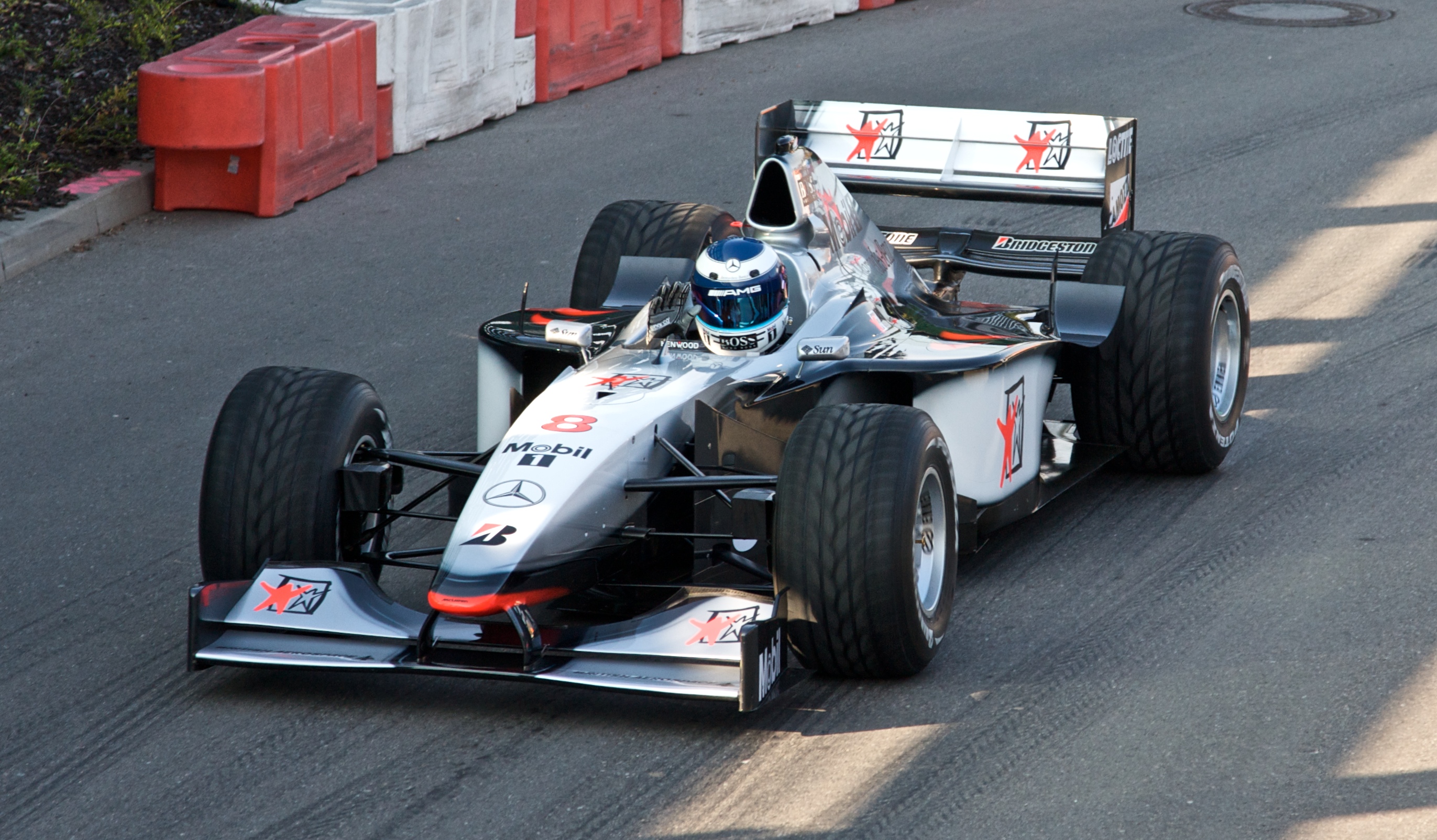
Newey joined McLaren in August 1997, after a period of gardening leave. Initially, he focused on refining Neil Oatley's 1997 MP4/12 design while dedicating his primary efforts to the 1998 car. A victory at the 1997 European Grand Prix provided momentum heading into the off-season. When racing resumed, the 1998 MP4/13 proved to be the dominant car, securing both the Constructors' and Drivers' Championships for Mika Häkkinen. Häkkinen narrowly missed a third consecutive Drivers' title in 2000. Newey later clarified that while he influenced the MP4/13's details, the 1999 MP4/14 was the first car he fully designed from scratch at McLaren.
In the spring of 2001, Newey controversially signed a contract with the Jaguar F1 team, managed by his friend and former CART colleague Bobby Rahal. However, McLaren boss Ron Dennis successfully persuaded Newey to remain with McLaren. Newey and Rahal later attributed the failed deal to internal politics at Ford and Niki Lauda undermining Rahal's position at Jaguar. Rahal was subsequently fired from Jaguar a few months later.
Despite remaining at McLaren, rumors of Newey's desire to leave persisted. By late 2004, speculation arose that he might return to Williams or even retire from Formula One design entirely. Although Ron Dennis vehemently denied these reports, the rumors continued into the 2004/2005 off-season. In April 2005, it was confirmed that his contract was extended by six months to the end of the year, with an expectation of a sabbatical or retirement. However, on 19 July, Newey announced he would remain with McLaren for the 2006 season. Newey later reflected that internal team politics at McLaren became increasingly problematic, making the latter half of his tenure there "the most difficult days" of his career and significantly reducing his motivation after 2000.
Newey's designs at McLaren achieved 43 race victories.
2.2.4. Red Bull Racing (2006-2024)
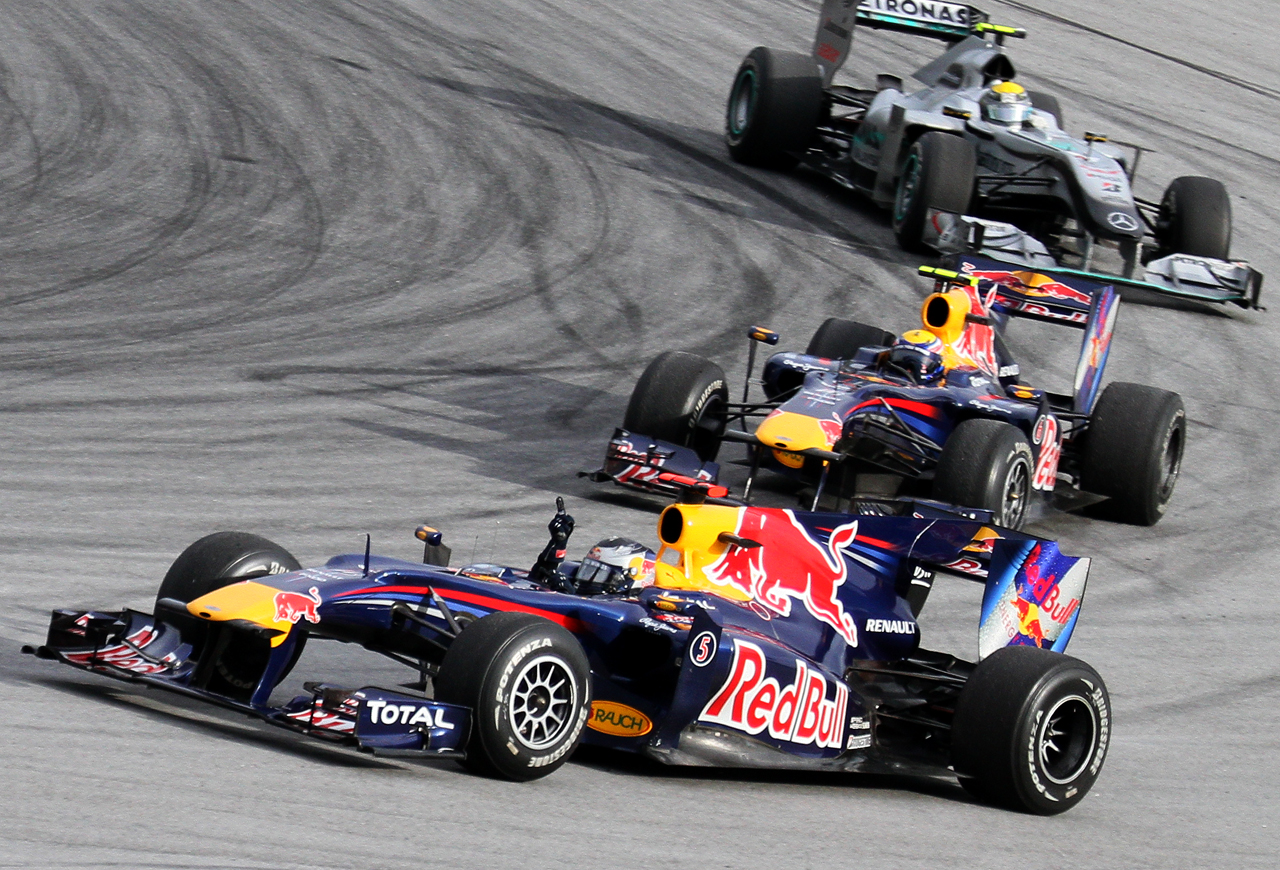
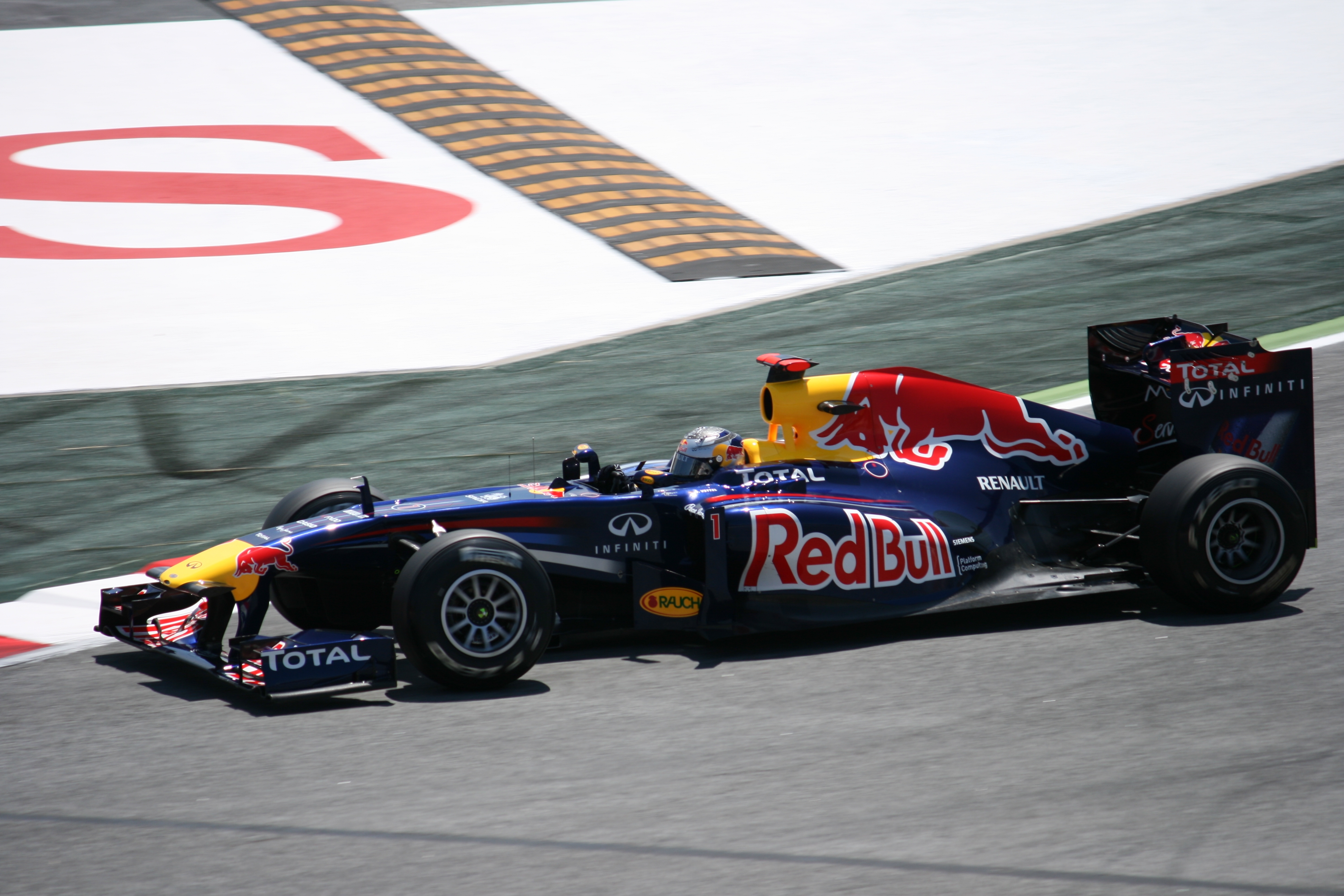
The 2011 RB7 continued this dominance, taking 18 of 19 pole positions and winning 12 races, securing double championships. The team and Sebastian Vettel continued their championship streak in 2012 with the RB8 and in 2013 with the RB9, which saw Vettel achieve a record-breaking nine consecutive wins.
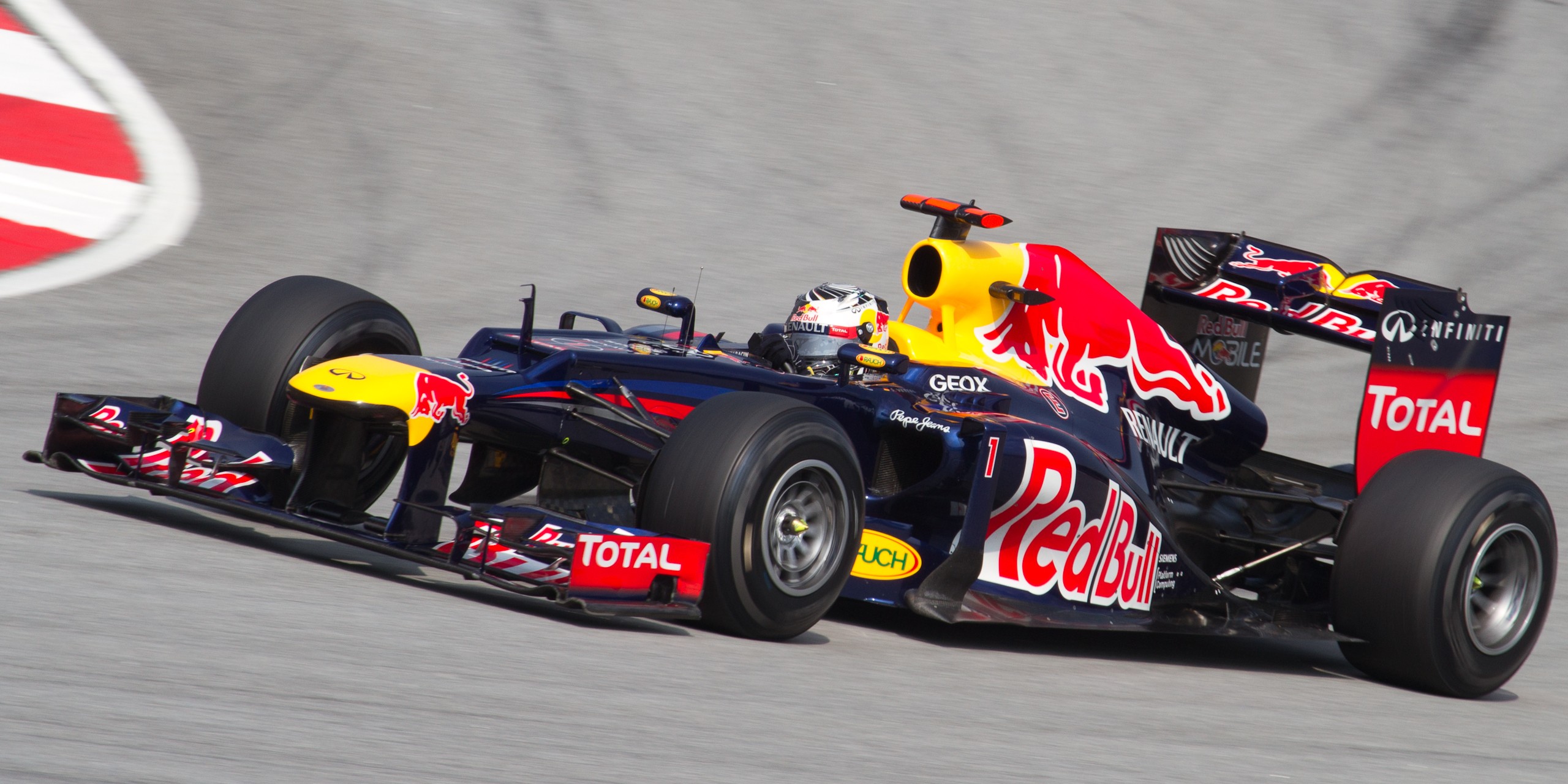
Despite assurances of remaining at McLaren, Red Bull Racing announced on 8 November 2005 that Newey would join the team from February 2006 as CTO. Reports indicated that Newey was offered around 10.00 M USD annually after McLaren hesitated to increase his salary during contract negotiations.
Newey had limited influence on the 2006 car's design, and Red Bull's season started poorly. However, David Coulthard, a long-time driver of Newey-designed cars, secured a third-place finish at the 2006 Monaco Grand Prix, signaling a potential upturn. The 2007 Red Bull car, powered by a Renault engine, showed reasonable speed but suffered from unreliability, with drivers retiring seven times each over 17 races. Nevertheless, Red Bull achieved fifth place in the Constructors' Championship after McLaren-Mercedes' disqualification.
The 2008 chassis, designed by Newey and Geoff Willis, was noted for its intricate design. The season began well, but Red Bull's performance declined in the second half, with Toro Rosso (Red Bull's "B team", also with Newey-designed chassis) ultimately outscoring them.
In 2009, Newey's design for the RB5 marked a significant leap in performance following major aerodynamic regulation changes. Red Bull secured its first win at the 2009 Chinese Grand Prix with Sebastian Vettel, establishing itself as a top contender. Mark Webber's victory at the 2009 Brazilian Grand Prix marked the 100th win for a Newey-designed car.
From 2010 onwards, Red Bull introduced evolutionary designs based on the RB5. Newey's innovative aerodynamic concepts, particularly in the car's rear-end design, including the adoption of pull-rod suspension and the development of the blown diffuser, proved revolutionary. In 2010, the RB6 secured both the Constructors' and Drivers' Championships, making Newey the only F1 designer to win Constructors' Championships with three different F1 teams.
On 8 June 2014, Red Bull Racing announced Newey had extended his contract, taking on broader responsibilities including "new Red Bull Technology projects." Red Bull reportedly fended off a 20.00 M GBP offer from Scuderia Ferrari. Following the introduction of V6 turbo-hybrid power units in 2014, Newey's cars were hampered by the performance of the Renault power units. This period led to Newey temporarily stepping away from day-to-day F1 design duties to focus on other projects, including the America's Cup yacht for Ben Ainslie Racing and the Aston Martin Valkyrie hypercar, a collaboration between Red Bull and Aston Martin. Newey later stated that the lack of competitive power units significantly reduced his motivation during this time.
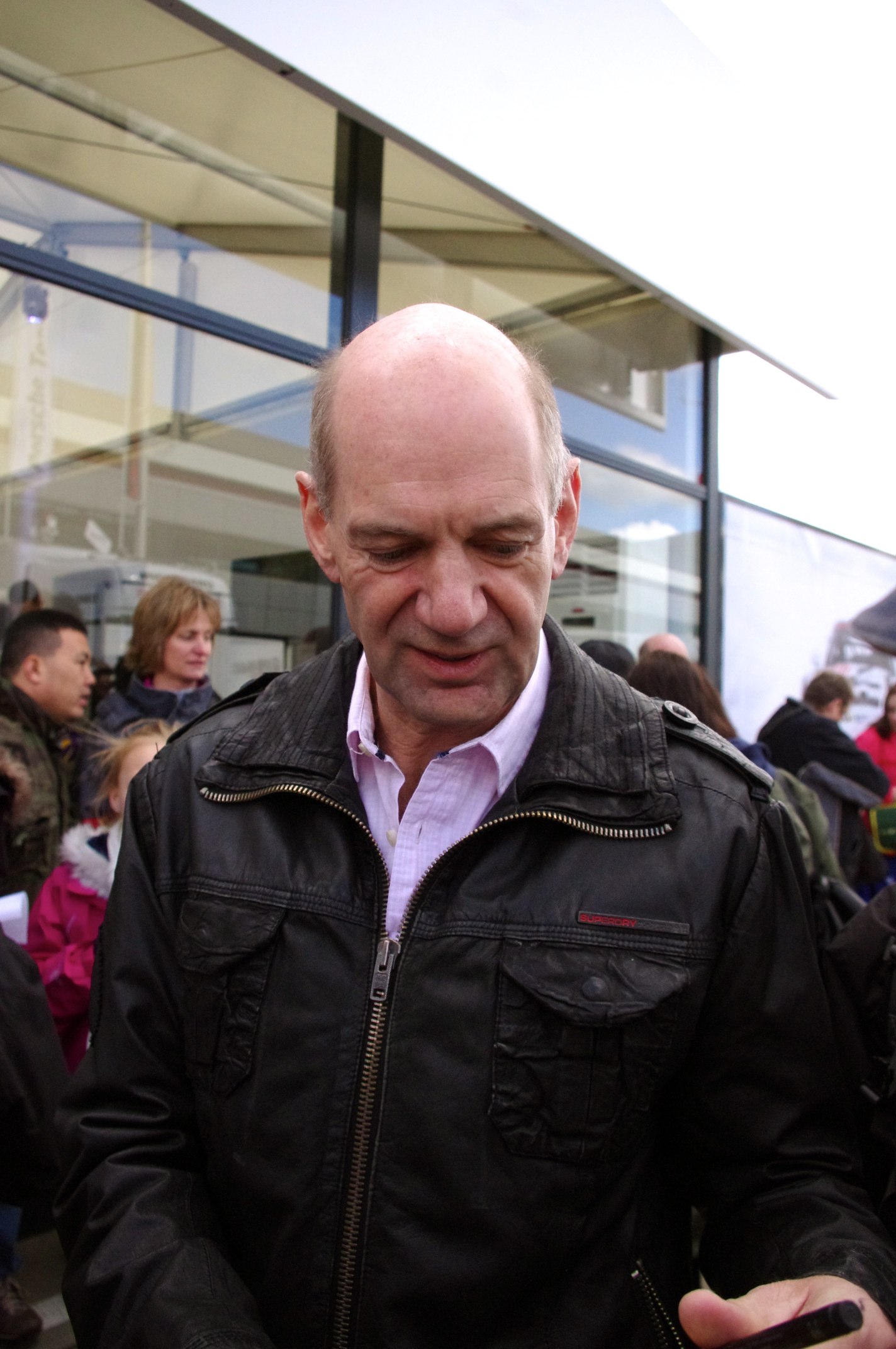
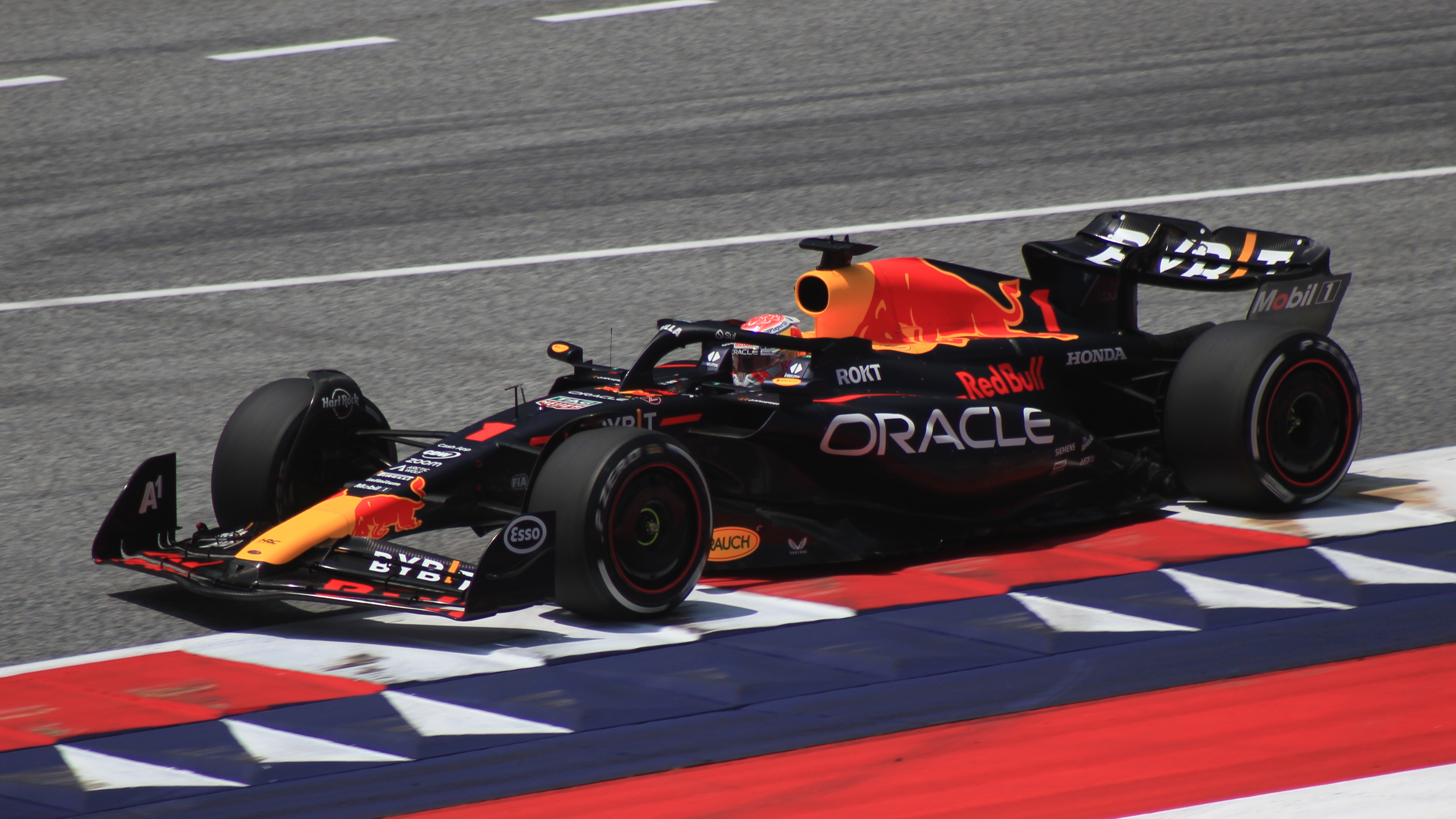
A switch to Honda power in 2019 eventually provided the team with a championship-capable power unit, and Newey returned to a more active role in F1 design. Between 2014 and 2020, all his cars except the 2015 RB11 won at least two Grands Prix. The 2021 season saw the team return to title contention, with the RB16B design winning the Drivers' Championship with Max Verstappen. In 2022, the RB18 secured Verstappen's second Drivers' Championship and Red Bull's first Constructors' Championship since 2013. This was followed by the 2023 RB19, which became one of the most dominant F1 cars in history, achieving a 95.45% win rate, surpassing the 1988 McLaren MP4/4's record.
At the 2023 Canadian Grand Prix, Verstappen's victory marked Red Bull's 100th win and Newey's 200th win in Formula One. Later that year, Red Bull broke McLaren's record of 11 consecutive victories at the Hungarian Grand Prix, and Verstappen broke Vettel's record of nine consecutive wins at the Italian Grand Prix, contributing to Red Bull's 15th consecutive win and setting two new records.
On 1 May 2024, Red Bull Racing announced that Newey would leave his day-to-day Formula One design duties immediately to focus on the RB17 hypercar. He is set to fully depart the company in the first quarter of 2025. Newey's designs for Red Bull (from 2007's RB3 to 2015's RB11, and 2019's RB15 to 2024's RB20) have collectively achieved 113 victories.
2.2.5. Aston Martin (2025 onwards)
On 9 September 2024, it was announced that Newey had signed a contract with Aston Martin. He will join the team as a shareholder and Managing Technical Partner on 1 March 2025, aligning with the new 2026 technical regulations. Despite his departure from Red Bull, Newey plans to continue his involvement with the Red Bull RB17 hypercar project, including participating in track tests scheduled for mid-2025.
3. Death of Ayrton Senna
Following the fatal accident of Ayrton Senna at the 1994 San Marino Grand Prix in a car that Newey helped design, Newey was among several members of the Williams team to be charged with manslaughter by Italian authorities. In an initial ruling in December 1997, Newey was acquitted. This acquittal was upheld on appeal in November 1999. However, in January 2003, the Italian Supreme Court reopened the case, citing "material errors." The court ultimately issued a full acquittal for Newey in May 2005, definitively clearing him of all charges.
4. Other Ventures
Beyond his primary role as a Formula One designer, Adrian Newey has engaged in various other motorsport and entertainment-related activities, showcasing his diverse interests and talents.
4.1. Video Game Collaboration
On 15 June 2010, during the Sony E3 Electronic Entertainment Expo press conference, it was revealed that Newey had collaborated as the chief technical officer for the video game Gran Turismo 5 for the PlayStation 3. A game trailer featured Newey alongside Sebastian Vettel at the Red Bull Technology building in Great Britain, discussing with Kazunori Yamauchi, the Japanese game designer who is the CEO of Polyphony Digital and creator of the Gran Turismo series. This collaboration led to the creation of the concept cars Red Bull X2010 and Red Bull X2011, which were featured in the game.
4.2. Personal Racing and Collections
Newey is an enthusiastic collector and driver of sports cars. He has participated in Le Mans Legend races for several years, though not without incident. In 2006, he crashed a Ford GT40 during a competition, escaping with only a minor cut finger. He later wrecked a Jaguar E-Type at the Goodwood Revival Meeting.
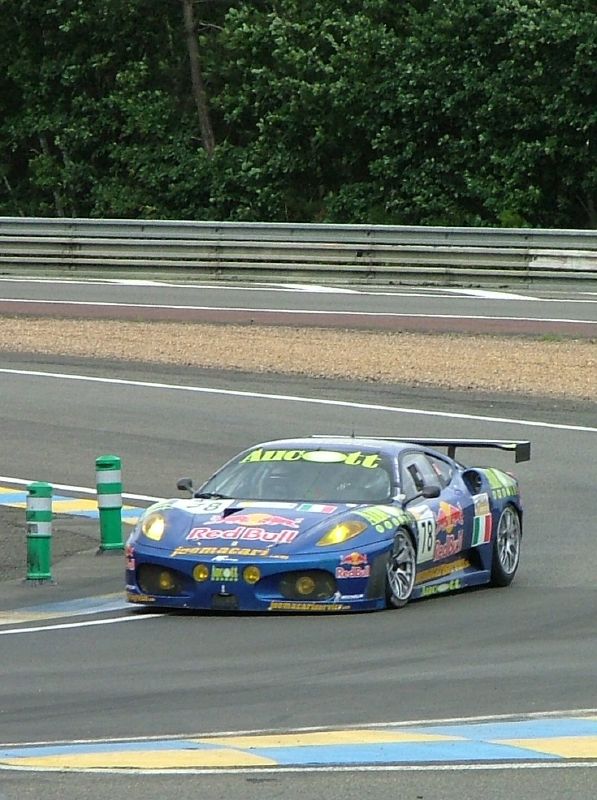
In 2007, Newey transitioned to modern racing, joining the driver lineup for the AF Corse Ferrari F430 in the 24 Hours of Le Mans. Alongside co-drivers Ben Aucott and Joe Macari, he finished 22nd overall and fourth in class. On 8 August 2010, while competing as a guest driver in the Ginetta G50 Cup at Snetterton, Newey was involved in an accident where his car sustained a heavy side-on impact after being spun into the path of Tony Hughes. He was taken to the hospital for precautionary checks but suffered no serious injuries.
On 2 July 2010, Newey was gifted his own Red Bull RB5 as a recognition of his achievements with Red Bull Racing since joining the team in 2007. He first drove the car up the hill at the 2010 Goodwood Festival of Speed. Newey is known to own several historic cars, including a Lotus 49B, which he raced at the 2024 Historic Grand Prix of Monaco, finishing fourth in the Serie D class.
Newey's close relationship with former F1 driver David Coulthard is notable; they have driven F1 cars together and their career paths have often intertwined. Coulthard joined Williams in 1994, then McLaren in 1996, with Newey following him to McLaren in 1997. Similarly, Coulthard moved to Red Bull in 2005, and Newey joined in 2006. Their shared time in the same F1 teams spanned approximately 15 years. In 2018, Newey and Coulthard co-founded the W Series, an all-female racing championship, where Newey served as an advisory board member. He also co-founded Veloce Racing, a team participating in the electric SUV series Extreme E.
5. Personal Life
Adrian Newey's personal life includes his family and marital history, with his son Harrison following in his footsteps into motorsport.
5.1. Family and Marriages
Adrian Newey has been married three times and has four children. His first wife was Amanda, a nurse, with whom he had two daughters. They married in 1983 and divorced in 1989. He married his second wife, Marigold, in 1992, and they separated in 2010. They had a daughter and a son, Harrison Newey, who became a professional racing driver. Harrison has achieved notable success, winning both the 2016-17 MRF Challenge Formula 2000 Championship and the 2017-18 Asian Le Mans Series. He has also competed in Super Formula in Japan, where Adrian Newey has been seen observing and sketching his son's car.
Since August 2017, Newey has been married to Amanda "Mandy" Smerczak, the daughter of South African actor Ron Smerczak.
6. Awards and Honours
Adrian Newey has received numerous accolades throughout his distinguished career, recognizing his unparalleled success in motorsport design.
6.1. Formula One World Championships
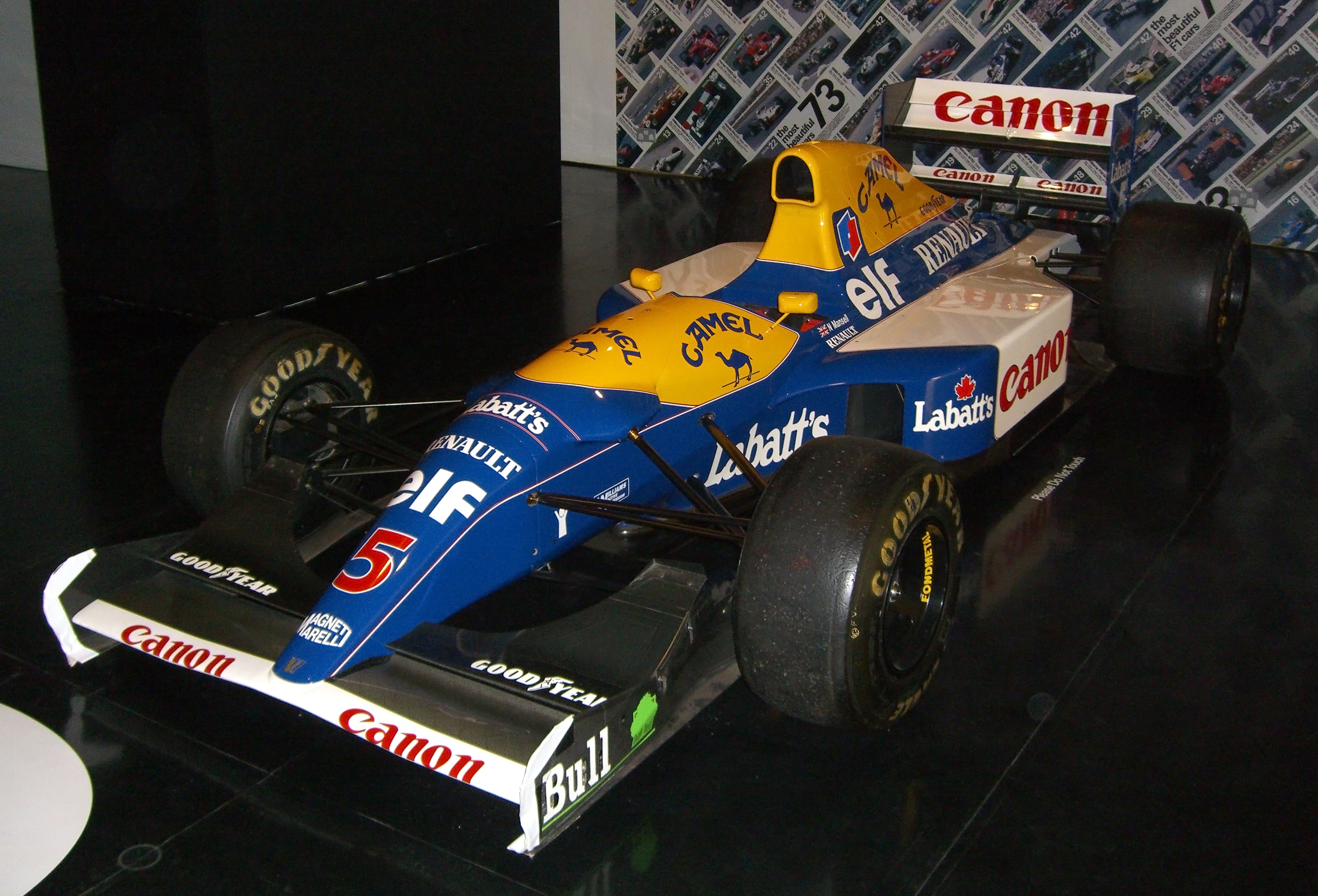
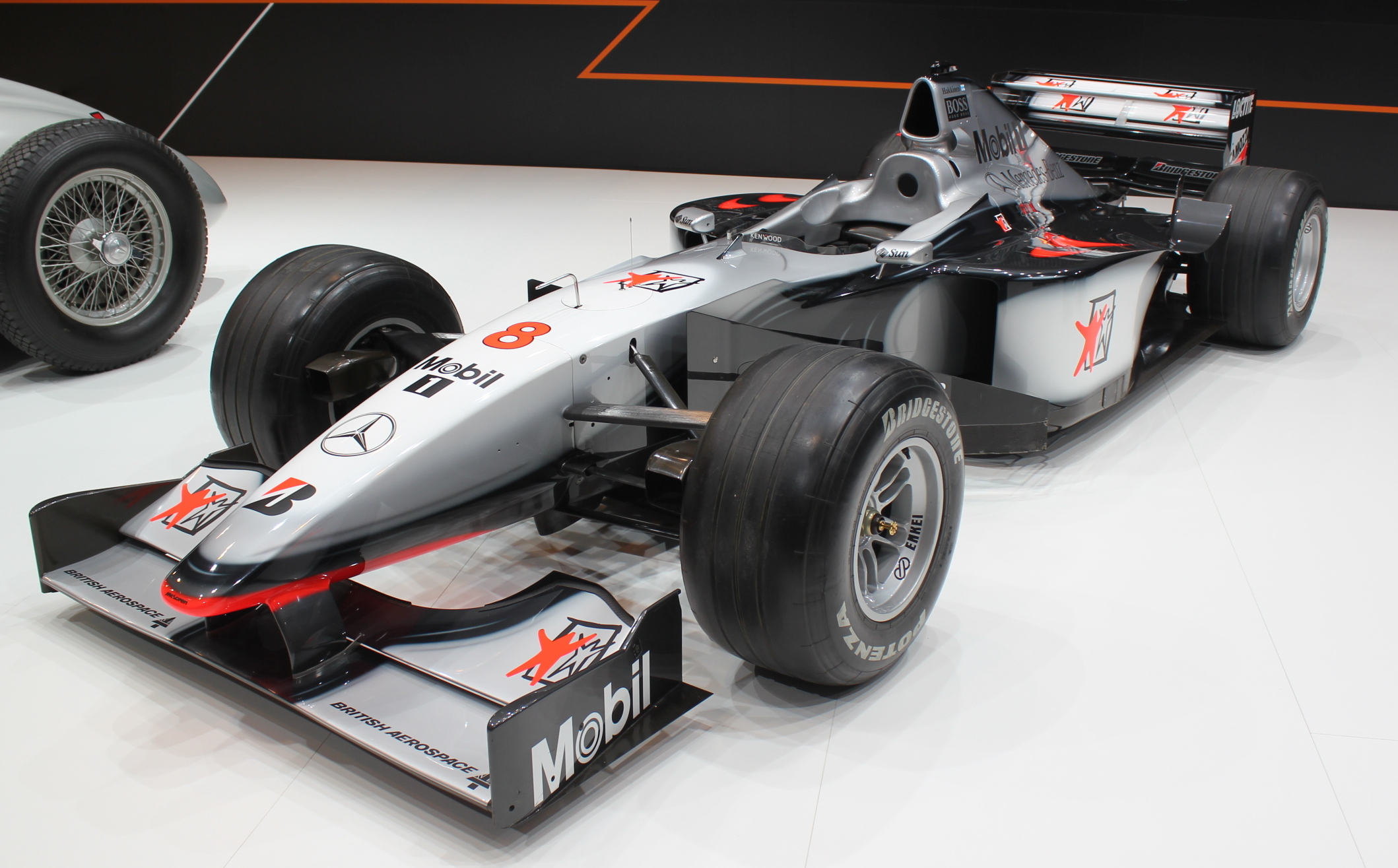
Newey-designed chassis have won 12 World Constructors' Championship titles and 14 World Drivers' Championship titles. This includes four consecutive Constructors' titles from 2010 to 2013 with Red Bull Racing. As of 2024, Newey has made 40 entries as a lead designer in Formula One, including three entries with Toro Rosso from 2007 to 2009, winning World Championships with 15 of them and Grand Prix victories with 31.
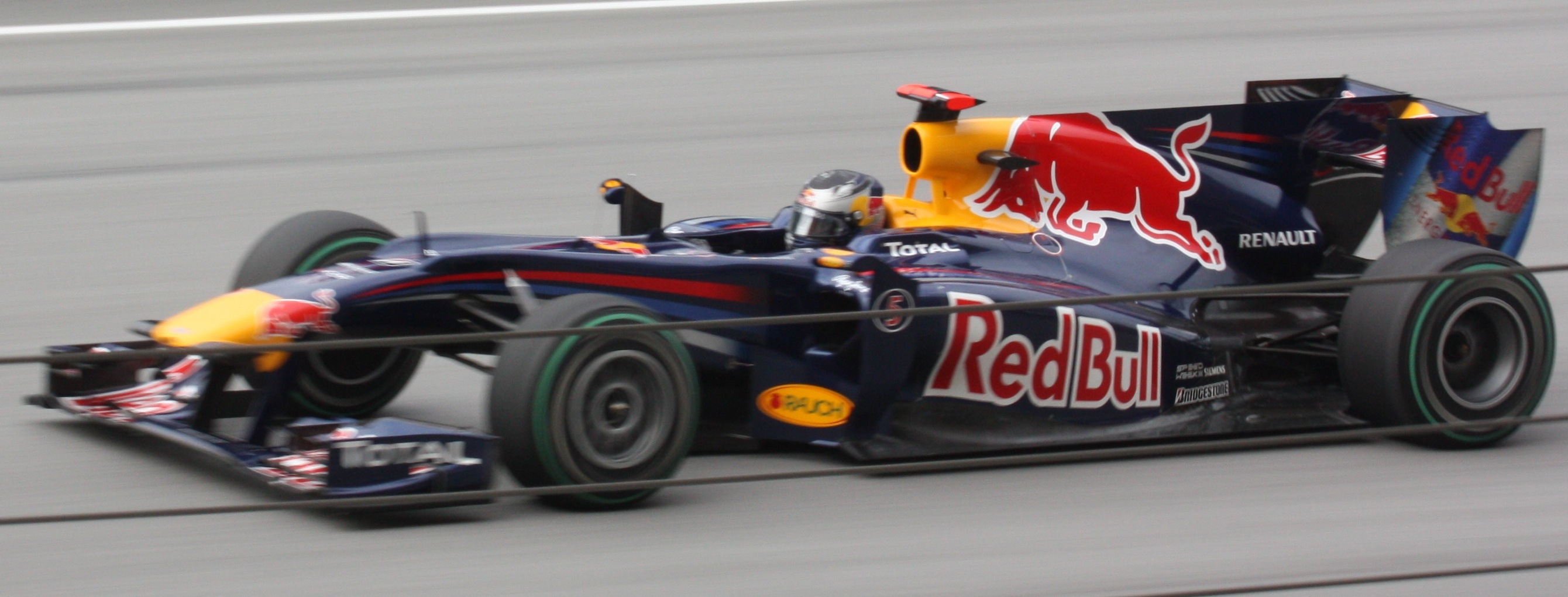
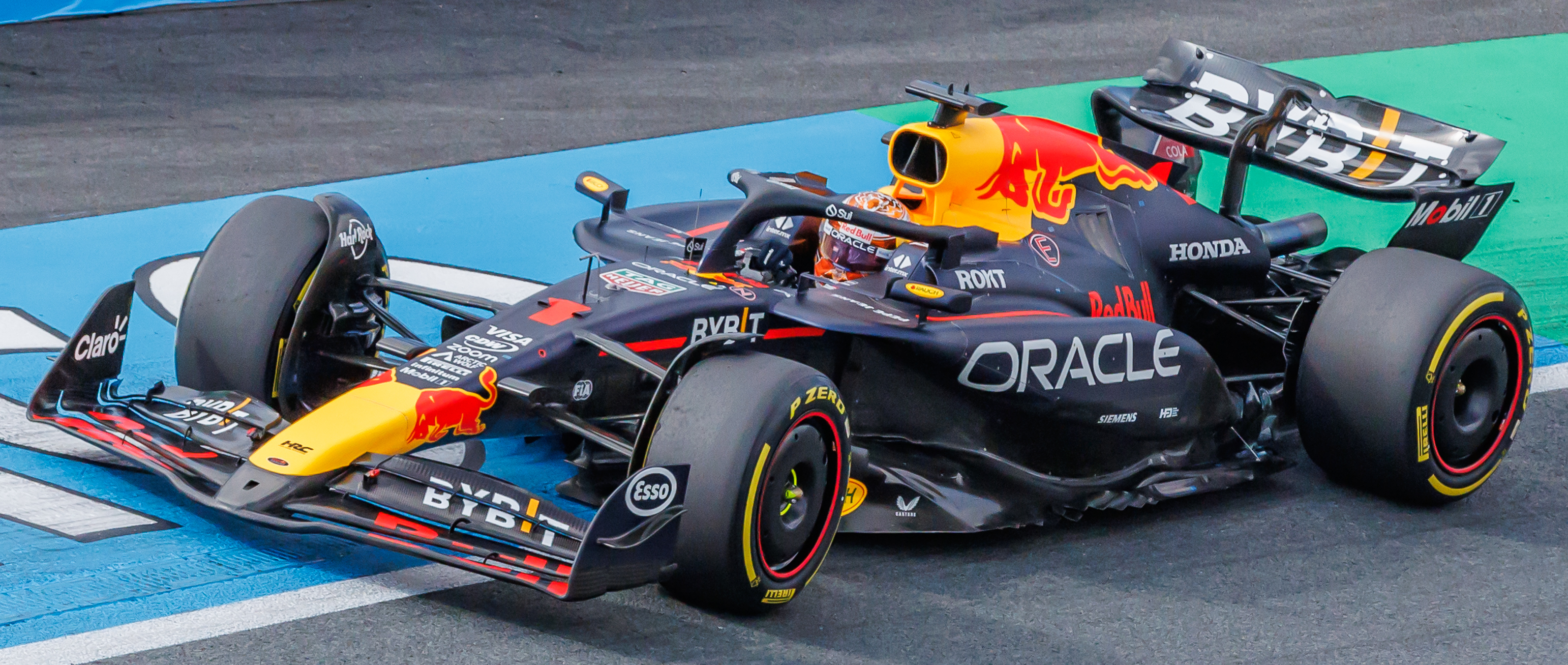
The following table details the Formula One World Championships won by cars designed by Adrian Newey:
| Season | World Championship | Chassis | Engine | Statistics | ||||||
|---|---|---|---|---|---|---|---|---|---|---|
| Constructors' | Drivers' | Races | Wins | Poles | Fastest Laps | Podiums | World Constructors' Championship standing | |||
| 1988 | Newey becomes chief designer at March | |||||||||
| - | 881 | Judd | 18 | 0 | 0 | 0 | 3 | 6th | ||
| 1989 | CG891 | 14 | 0 | 0 | 1 | 0 | 12th | |||
| 1990 | March becomes Leyton House with Newey promoted to technical director | |||||||||
| - | CG901 | Judd | 16 | 0 | 0 | 0 | 1 | 7th | ||
| 1991 | Newey moves to Williams as chief designer | |||||||||
| - | FW14 | Renault | 16 | 7 | 6 | 8 | 17 | 2nd | ||
| 1992 | United Kingdom Williams | United Kingdom Nigel Mansell | FW14B | 16 | 10 | 15 | 11 | 21 | 1st | |
| 1993 | United Kingdom Williams (2) | France Alain Prost | FW15C | 16 | 10 | 15 | 10 | 22 | 1st | |
| 1994 | United Kingdom Williams (3) | - | FW16 | 16 | 7 | 6 | 8 | 13 | 1st | |
| 1995 | - | FW17 | 17 | 5 | 12 | 6 | 17 | 2nd | ||
| 1996 | United Kingdom Williams (4) | United Kingdom Damon Hill | FW18 | 16 | 12 | 12 | 11 | 21 | 1st | |
| 1997 | United Kingdom Williams (5) | Canada Jacques Villeneuve | FW19 | 17 | 8 | 11 | 9 | 15 | 1st | |
| 1998 | Newey moves to McLaren as technical director | |||||||||
| United Kingdom McLaren | Finland Mika Häkkinen | MP4/13 | Mercedes | 16 | 9 | 12 | 9 | 20 | 1st | |
| 1999 | - | Finland Mika Häkkinen (2) | MP4/14 | 16 | 7 | 11 | 9 | 16 | 2nd | |
| 2000 | - | MP4/15 | 17 | 7 | 7 | 12 | 22 | 2nd | ||
| 2001 | MP4-16 | 17 | 4 | 2 | 6 | 13 | 2nd | |||
| 2002 | MP4-17 | 17 | 1 | 0 | 2 | 10 | 3rd | |||
| 2003 | MP4-17D | 16 | 2 | 2 | 3 | 13 | 3rd | |||
| 2004 | MP4-19 | 18 | 1 | 1 | 2 | 4 | 5th | |||
| 2005 | MP4-20 | 19 | 10 | 7 | 12 | 18 | 2nd | |||
| 2006 | MP4-21 | 18 | 0 | 3 | 3 | 9 | 3rd | |||
| 2007 | Newey moves to Red Bull as CTO | |||||||||
| - | RB3 STR2 | Renault (Red Bull) Ferrari (Toro Rosso) | 17 | 0 | 0 | 0 | 1 | 5th (Red Bull), 7th (Toro Rosso) | ||
| 2008 | RB4 STR3 | 18 | 1 (1 for Toro Rosso) | 1 (1 for Toro Rosso) | 0 | 2 (including 1 for Toro Rosso) | 6th (Toro Rosso), 7th (Red Bull) | |||
| 2009 | RB5 STR4 | 17 | 6 | 5 | 6 | 16 | 2nd (Red Bull), 10th (Toro Rosso) | |||
| 2010 | Austria Red Bull | Germany Sebastian Vettel | RB6 | Renault | 19 | 9 | 15 | 6 | 20 | 1st |
| 2011 | Austria Red Bull (2) | Germany Sebastian Vettel (2) | RB7 | 19 | 12 | 18 | 10 | 27 | 1st | |
| 2012 | Austria Red Bull (3) | Germany Sebastian Vettel (3) | RB8 | 20 | 7 | 8 | 7 | 14 | 1st | |
| 2013 | Austria Red Bull (4) | Germany Sebastian Vettel (4) | RB9 | 19 | 13 | 11 | 12 | 24 | 1st | |
| 2014 | - | RB10 | 19 | 3 | 0 | 3 | 12 | 2nd | ||
| 2015 | RB11 | 19 | 0 | 0 | 3 | 3 | 4th | |||
| 2016 | RB12 | TAG Heuer (Renault rebadged) | 21 | 2 | 1 | 5 | 16 | 2nd | ||
| 2017 | RB13 | 20 | 3 | 0 | 2 | 13 | 3rd | |||
| 2018 | RB14 | 21 | 4 | 2 | 6 | 13 | 3rd | |||
| 2019 | RB15 | Honda | 21 | 3 | 2 | 5 | 9 | 3rd | ||
| 2020 | RB16 | 17 | 2 | 1 | 3 | 13 | 2nd | |||
| 2021 | - | Netherlands Max Verstappen | RB16B | 22 | 11 | 10 | 8 | 23 | 2nd | |
| 2022 | Austria Red Bull (5) | Netherlands Max Verstappen (2) | RB18 | RBPT | 22 | 17 | 8 | 8 | 28 | 1st |
| 2023 | Austria Red Bull (6) | Netherlands Max Verstappen (3) | RB19 | Honda RBPT | 22 | 21 | 14 | 11 | 30 | 1st |
| 2024 | - | Netherlands Max Verstappen (4) | RB20 | 24 | 9 | 8 | 4 | 18 | 3rd | |
| 2025 | Newey departs Red Bull and enters gardening leave | |||||||||
6.2. Other Awards and Honours
Newey has been recognized with several official honors and academic distinctions:
- Officer of the Order of the British Empire (OBE) in 2012 for his services to motorsport.
- Honorary Doctor of Science from the University of Sussex in 2013.
- Honorary Doctor of Engineering from Oxford Brookes University in 2013.
7. Bibliography
Adrian Newey authored his autobiography, titled How to Build a Car: The Autobiography of the World's Greatest Formula 1 Designer, which was published in 2017. He initially agreed to the project when a publisher proposed a book focusing on his design philosophy and the 10 cars he was most proud of. He also wanted to include autobiographical elements. Newey collaborated with a writer who had no prior automotive industry experience to make the content accessible to a broader audience, but he ultimately rewrote about a third of the book himself to ensure accuracy. The book was also translated into Japanese.
8. Impact and Legacy
Adrian Newey's impact on motorsport, particularly Formula One, is profound, largely due to his innovative technical contributions and distinctive design philosophy.
8.1. Technical Contributions and Innovations
Newey is widely known for his meticulous approach to design and his exceptional understanding of aerodynamics, earning him the moniker "aerodynamic genius" or "air-flow wizard." Even as CAD became standard, he famously continued to use a drawing board, pencil, and ruler for his designs. He cited the ability to view all elements at the same scale without screen limitations and the freedom to sketch and revise quickly as benefits.
His pursuit of aerodynamic perfection was uncompromising. During his time at March, he disliked sponsor stickers on the underside of the rear wing, fearing they would disturb airflow and reduce downforce. He was so sensitive to aerodynamic disturbances that he even noticed the emergency rescue straps on drivers' racing suits. Newey also pushed for tight packaging around the engine; at Leyton House, he requested Judd to develop an engine with a narrower 75-degree bank angle to allow for a more aerodynamically efficient engine cover. He also famously debated with Bridgestone's Hirohide Hamashima over the aerodynamic impact of new wide front tires in 1998, eventually conceding after test results.
Newey's designs introduced several distinctive and influential features:
- 3D Front Wing Endplates: First seen on the 1988 March 881, these extended the front wing endplates inwards towards the front tires to control turbulent airflow, leading to an arms race in front wing development.
- Pentagonal Cockpit Opening: A design where the monocoque opening was cut diagonally downwards, exposing the driver's shoulders, appearing as a home-plate shape from above. This was a signature feature from the March 881 to the 1994 Williams FW16 but disappeared after 1995 due to new cockpit side protector regulations.
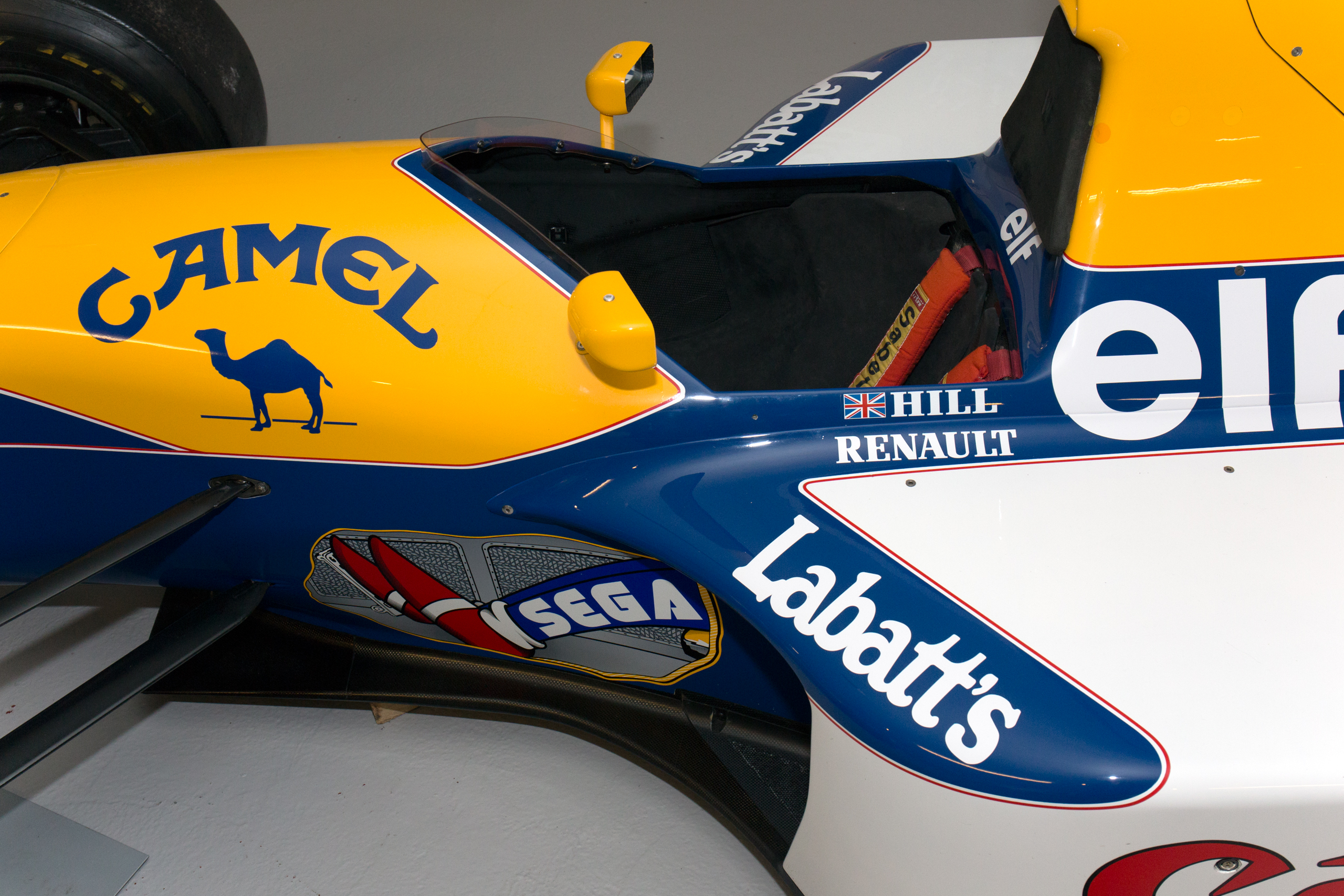
- Tunnel Diffuser: A large, semi-circular rear diffuser, characteristic of his March (Leyton House) cars, designed to maximize aerodynamic efficiency.
- Chimney Ducts: Introduced on the 2000 MP4/15, these chimney-like ducts on top of the sidepods helped dissipate heat from within the engine cover, becoming a common aerodynamic feature until the 2009 regulation changes.
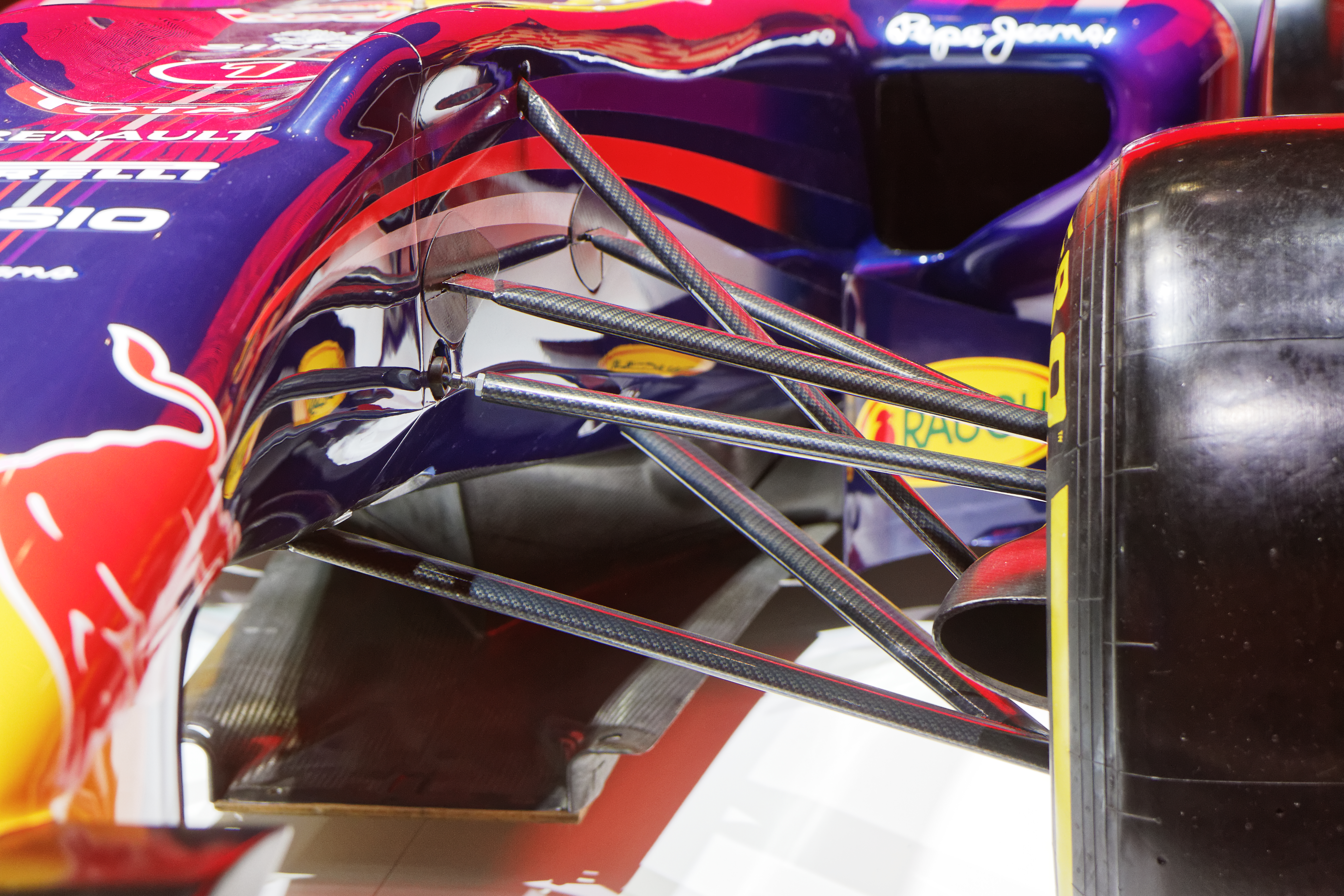
- Zero-Keel: A design where the front lower wishbone attaches directly to the underside of the monocoque without a protruding keel. Adopted from the 2005 MP4-20, this design is now common in F1.
- V-Nose: A feature of the 2009 RB5, where the upper surface of the monocoque rises at the shoulders and narrows downwards, giving the monocoque cross-section a "V" shape. This design allowed for a curved underside of the front nose while complying with minimum cross-sectional area regulations.
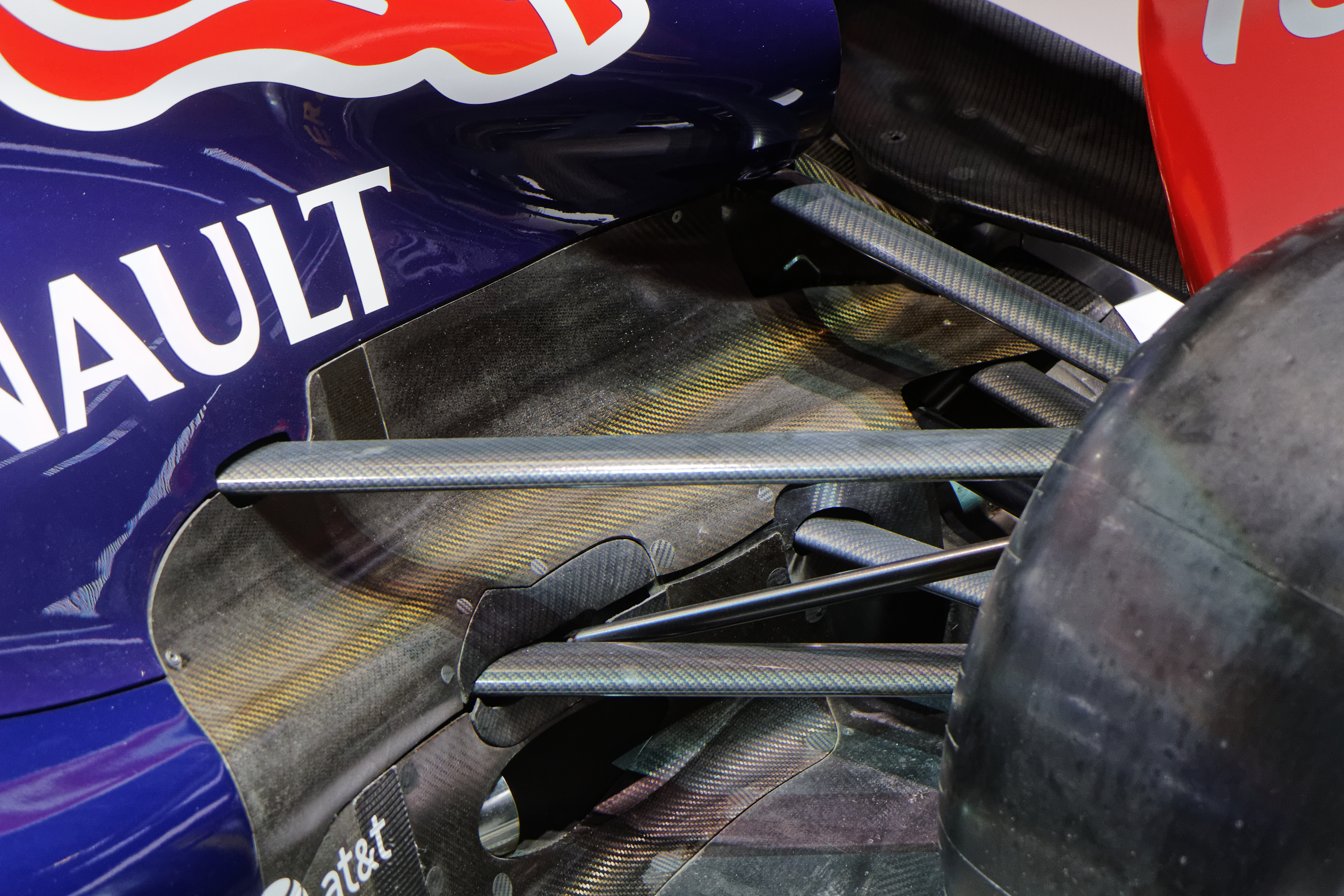
- Rear Pull-Rod Suspension: A shift from the conventional push-rod to pull-rod rear suspension, lowering the damper unit and reducing the height of the rear end, enhancing aerodynamic efficiency. This has become a standard design in F1 since the RB5.
- Blown Diffuser: Introduced on the 2010 RB6, this system directed high-velocity engine exhaust gases to the rear tires, increasing diffuser efficiency. The 2011 RB7 further developed "off-throttle blowing" with Renault, which became a point of controversy and was eventually banned.
- High-Rake Concept: Since the 1996 FW18, Newey has favored a "high-rake" concept, where the front of the car is low and the rear is relatively high, creating a nose-down attitude. Newey believes this increases downforce, though it can make car balance challenging under current regulations.
8.2. Criticism and Controversy
Throughout his career, Adrian Newey has faced some criticisms and controversies. The most significant was his involvement in the legal proceedings following Ayrton Senna's fatal accident in 1994, where he was charged with manslaughter before ultimately being acquitted (as detailed in the "Death of Ayrton Senna" section).
Beyond legal matters, Newey has spoken about internal team politics affecting his work. He described the latter half of his tenure at McLaren as "the most difficult days" due to increasing political complexities within the team, including conflicts arising from a "matrix system" of personnel management. This internal friction, along with Ron Dennis's persuasion, played a role in his decision not to move to Jaguar Racing in 2001, despite having signed a contract with his friend Bobby Rahal. The Japanese source also notes that Newey felt his motivation at Red Bull Racing declined due to the uncompetitive performance of the Renault power units, leading him to temporarily step away from day-to-day F1 design in 2014. He also declined offers from Ferrari (reportedly "impossibly huge" sums) and Mercedes, stating he did not want to be a "trophy hunter" by taking over from Ross Brawn at Mercedes.